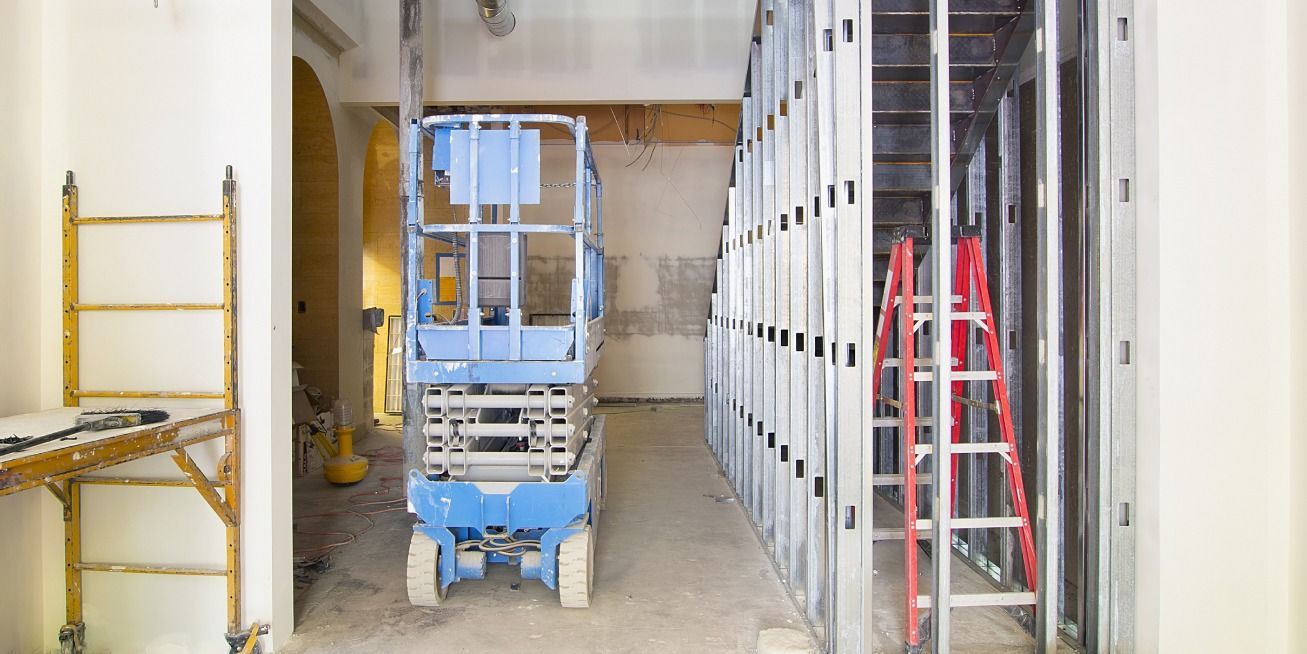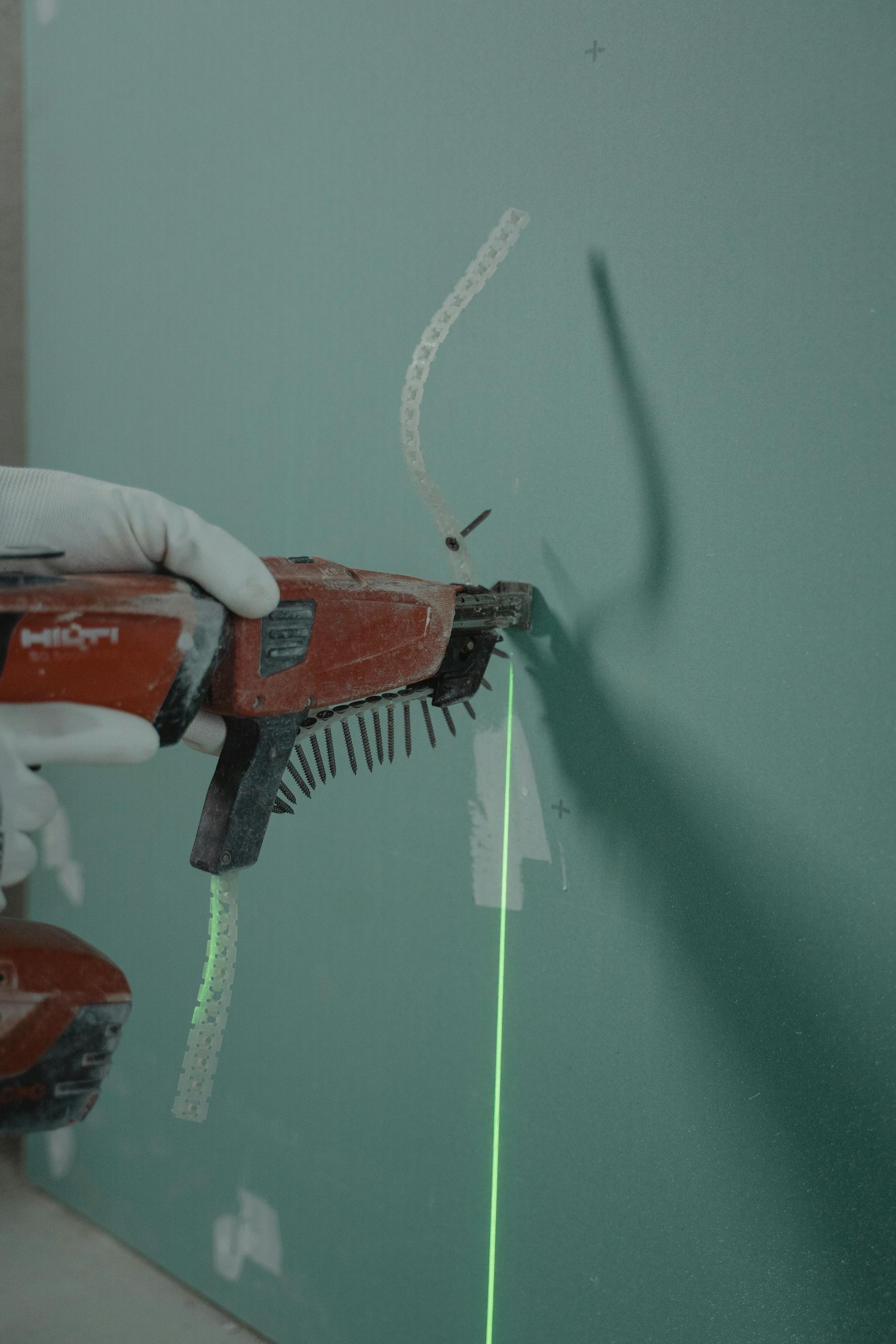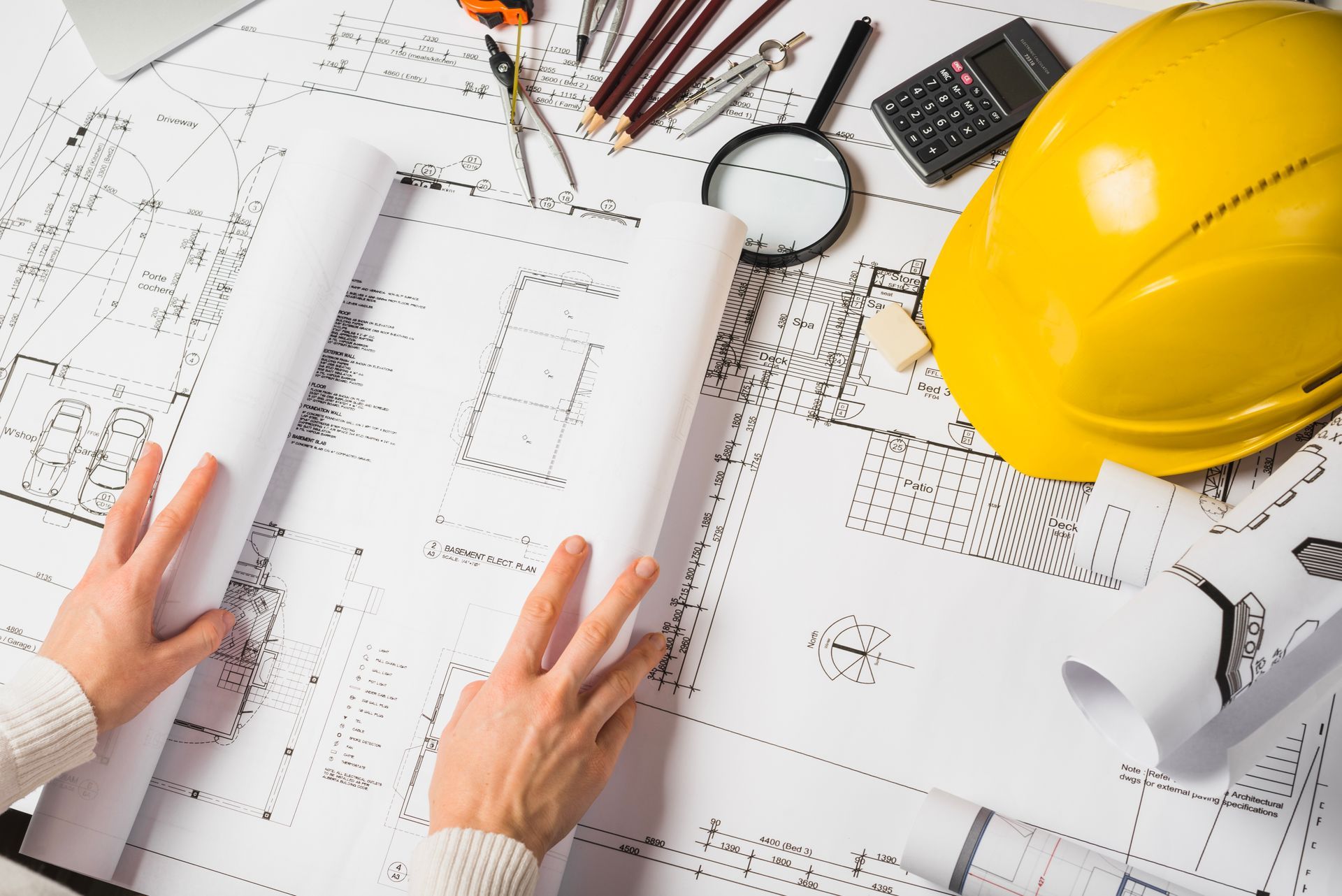
Drywall vs. Plaster: Which One Is Right for Your Home?
When planning a home renovation or new construction project, one of the biggest decisions you'll face is choosing between drywall and plaster for your walls and ceilings. This choice affects not just how your home looks, but also how it feels, sounds, and holds up over time.
For most modern homes, drywall is the right choice due to its lower cost, faster installation, and easier repairs, while plaster is better for historic homes, custom designs, and superior soundproofing. Your final decision should balance your budget, timeline, and specific needs.
These two wall systems have their own strengths and weaknesses.
Understanding the differences helps you make a smart choice that fits your home, budget, and lifestyle. Let's take a closer look at what sets drywall and plaster apart, so you can decide which material makes the most sense for your project.
Understanding the Basics: Drywall and Plaster Explained
What is Drywall and How is it Made?
Drywall (also called sheetrock or gypsum board) is a panel made of gypsum plaster pressed between two thick sheets of paper. Standard panels come in 4×8 foot sheets and various thicknesses, usually 1/2 inch for walls and 5/8 inch for ceilings.
Manufacturers create drywall by mixing gypsum with additives, forming it into sheets, and drying it in a kiln. The result is a lightweight, fire-resistant panel that installers can cut to size and attach directly to wall studs using screws or nails.
Drywall came into wide use after World War II when the building boom required faster construction methods. Today, it's the standard wall material in most new homes across America.
What is Plaster and How is it Applied?
Plaster is a building material made from lime, gypsum, or cement mixed with water and sand. When applied to walls, it hardens into a solid, durable surface. Traditional plaster walls require three layers: the scratch coat, brown coat, and finish coat.
Unlike the pre-made panels of drywall, plaster is mixed on-site and applied wet over a base called lath. Historically, wooden strips served as lath, but modern plaster systems often use special mesh or gypsum board as the base.
Plaster was the standard wall finish for centuries before drywall became popular. Many historic homes feature plaster walls and ornate plaster details that showcase the material's flexibility for decorative use.
Cost Comparison: Budget Considerations for Homeowners
Material Costs: Drywall vs. Plaster
Drywall is significantly less expensive than plaster when comparing material costs. Basic drywall panels cost about $10-15 per 4×8 foot sheet, plus the cost of joint compound, tape, and screws.
Plaster materials cost more, typically 2-3 times higher than drywall materials for the same square footage. This includes the cost of the base (lath or special gypsum boards) plus the multiple coats of plaster mix.
For a typical 12×12 foot room, drywall materials might cost $200-300, while plaster materials could run $500-800 or more depending on the type of plaster system used.
Installation and Labor Expenses
The bigger cost difference comes from labor. Drywall installation is much faster, with professionals hanging and finishing a room in 1-3 days. Skilled drywall installers charge $1.50-3.00 per square foot for a complete job.
Plaster application requires specialized skills and takes much longer—often 5-7 days for the same room because each coat must dry completely before the next is applied. Skilled plasterers charge $5-10 per square foot or more, making labor costs 3-4 times higher than drywall.
For larger projects, this cost difference becomes even more significant, often making plaster impractical for budget-conscious homeowners.
Long-term Maintenance Costs
Drywall can be easier and cheaper to repair for small damages. Patching holes or cracks is straightforward and often costs under $100 for professional repair of a typical damage spot.
Plaster repairs require specialized knowledge and can be more expensive, often starting at $200-300 for even small repairs. However, well-maintained plaster walls may need fewer repairs over time due to their durability.
When considering lifetime costs, the higher durability of plaster might offset some of the initial installation expense, but drywall remains the more budget-friendly option for most homeowners.
Installation Process and Timeline
Drywall Installation: Speed and Simplicity
Drywall installation follows a straightforward process: measure and cut panels, attach them to studs, apply joint compound to seams, embed tape, and apply additional coats of compound. After drying and sanding, the walls are ready for primer and paint.
A professional crew can typically install drywall in a 2,000-square-foot home in about a week. This includes hanging the panels, taping and mudding the seams, and sanding for a smooth finish.
The relative simplicity of drywall installation means more contractors have these skills, making it easier to find qualified professionals at competitive rates.
Plaster Application: Skill and Patience Required
Plaster application is a multi-step, labor-intensive process. First, workers install the lath base. Then they apply three separate coats of plaster—scratch, brown, and finish—with drying time between each coat.
The process requires specialized skills and tools, along with an understanding of mixing ratios and working times. Each coat must be applied with proper thickness and technique for good results.
For the same 2,000-square-foot home, a plaster installation might take 3-4 weeks to complete. This extended timeline impacts both the project budget and the living situation during renovation.
DIY Potential for Each Option
Drywall is more DIY-friendly for homeowners with basic tools and moderate skills. While professional results require practice, many homeowners successfully complete small drywall projects themselves.
Plaster application is rarely recommended for DIY work unless the homeowner has specific training or experience. The skill level required and the small working time window once materials are mixed make it challenging for beginners.
For DIY homeowners, drywall offers significant cost savings, while plaster typically requires professional installation regardless of budget considerations.
Durability and Longevity Factors
How Drywall Holds Up Over Time
Drywall offers good durability for modern homes but is more vulnerable to impacts and water damage than plaster. It can dent from hard knocks and may show wear in high-traffic areas over time.
With proper installation and maintenance, drywall typically lasts 30-70 years before needing replacement. Factors affecting longevity include the quality of installation, household humidity levels, and exposure to damage.
Modern drywall products include specialized options for moisture resistance (green board), fire resistance (Type X), and sound dampening, allowing homeowners to choose appropriate materials for specific areas.
Plaster's Reputation for Longevity
Plaster walls are known for their exceptional durability. Many historic homes have original plaster that has lasted over a century. The material hardens over time, becoming increasingly solid.
The multiple layers and denser composition make plaster more impact-resistant than drywall. It's less likely to dent from everyday bumps and knocks that might damage drywall.
Plaster's longevity is one reason it's often preferred for historic preservation and high-end construction where quality trumps cost considerations.
Resistance to Damage and Wear
Plaster provides better resistance to everyday wear but can crack due to house settling or vibration. These cracks often follow the line where two sections of lath meet.
Drywall is more flexible and forgiving of minor house movements but more prone to surface damage. It's also more vulnerable to water, which can cause the paper facing to bubble and the gypsum core to crumble.
For homes in areas with high humidity or water concerns, specialized moisture-resistant drywall or veneer plaster systems offer better protection than standard options.
Sound and Insulation Properties
Noise Reduction Capabilities
Plaster walls typically provide superior soundproofing compared to standard drywall. The density of plaster (about 1/2 inch of plaster equals the sound-blocking ability of almost 1 inch of drywall) makes it better at blocking noise transmission.
Traditional drywall offers modest sound insulation, but specialized acoustic drywall products can significantly improve performance. These specialized panels cost more than standard drywall but less than plaster.
For home theaters, music rooms, or bedrooms requiring quiet, plaster offers natural sound dampening advantages, while drywall may need additional treatments like sound-dampening compounds or double layers.
Thermal Insulation Benefits
Neither material provides significant thermal insulation on its own. The insulation value comes primarily from the materials inside the wall cavity, such as fiberglass batts or foam insulation.
However, plaster's greater density does offer a slight advantage in thermal mass, helping to moderate temperature fluctuations more effectively than drywall.
For energy efficiency, the choice between drywall and plaster matters less than proper wall cavity insulation and air sealing techniques.
Fire Resistance Comparison
Both materials offer good fire resistance due to their gypsum content, which contains crystallized water that evaporates when exposed to high heat, delaying fire spread.
Plaster generally provides superior fire protection due to its density and thickness. A traditional three-coat plaster wall offers up to twice the fire resistance of a single layer of standard drywall.
For improved fire safety with drywall, Type X or Type C fire-resistant drywall offers enhanced protection and is required by building codes in certain applications like garage-to-house walls.
Aesthetic Considerations and Design Flexibility
Finish Options and Textures
Drywall provides a smooth, uniform surface that works well with modern design styles. While texture can be added, perfectly smooth walls are easier to achieve with drywall.
Plaster excels at creating custom textures and finishes from subtle hand-troweled effects to dramatic sculptural elements. Venetian plaster and other decorative techniques showcase the material's artistic potential.
The final appearance of either material depends greatly on the skill of the installer and the specific finishing techniques used.
Customization Potential
Plaster offers unmatched flexibility for custom designs, including curved walls, arches, and ornamental details. Skilled plasterers can create almost any shape or texture directly on the wall.
Drywall has more limitations for custom shapes but can achieve some curves and details with specialized techniques. Complex designs typically require cutting multiple small pieces or using specialized bendable products.
For homes with unique architectural features or custom details, plaster's moldability provides design advantages that may justify its higher cost.
Historical and Modern Applications
Plaster is the authentic choice for historic home restoration. Maintaining original plaster or replacing it with new plaster preserves historical accuracy in older buildings.
Drywall is the standard for contemporary construction, offering clean lines and compatibility with modern building techniques and materials.
Some modern homes use hybrid approaches, with plaster veneer over drywall base to combine the faster installation of drywall with some of the aesthetic and performance benefits of plaster.
Environmental and Health Impacts
Eco-Friendly Aspects of Each Material
Both materials are primarily made from gypsum, a naturally occurring mineral that's relatively abundant. However, the manufacturing processes differ in environmental impact.
Drywall manufacturing is energy-intensive but benefits from recycling programs that can reuse waste material. Some manufacturers now offer eco-friendly drywall with recycled content.
Traditional lime plaster has some environmental advantages as a more natural material that absorbs CO2 as it cures. Some specialty plaster products focus on natural ingredients and low environmental impact.
Indoor Air Quality Considerations
Modern drywall is generally safe for indoor air quality but may contain trace additives that concern some homeowners. Low-VOC joint compounds are available for those with sensitivities.
Natural plaster products can offer better air quality performance, with some lime and clay plasters actively filtering indoor air pollutants. These specialty plasters cost more but provide health benefits for sensitive individuals.
For both materials, proper installation and finishing techniques help minimize dust and contaminants that could affect indoor air quality.
Making the Right Choice for Your Home
Best Applications for Drywall
Drywall is ideal for new construction and renovations where budget and timeline are primary concerns. Its cost-effectiveness makes it practical for large projects.
Homes in developing areas where the house may settle benefit from drywall's flexibility, which resists cracking better than rigid plaster.
DIY homeowners and those working with standard contractors will find drywall more accessible in terms of both skills required and available professionals.
When Plaster Makes More Sense
Plaster is the better choice for historic renovations where maintaining architectural authenticity matters. It provides the correct look and performance for period homes.
High-end homes where superior acoustics and luxurious finishes justify the additional expense often benefit from plaster walls.
Projects with unique design elements like curved walls, arches, or custom textures may require plaster to achieve the desired results.
Hybrid Approaches for Modern Homes
Many contemporary projects use veneer plaster systems that apply a thin layer of plaster over special gypsum board. This offers some benefits of both materials.
Another option is using drywall for most walls but incorporating plaster in specific areas where its properties or aesthetics are most valuable, such as in main living spaces.
For renovations, some homeowners choose to repair and keep original plaster in good condition while using drywall for new walls or areas needing complete replacement.
Professional Installation Services in South Central PA
Finding Expert Contractors for Your Project
The choice between drywall and plaster is important, but equally crucial is finding skilled professionals to install your chosen material properly. Quality installation determines how well either material performs.
In South Central Pennsylvania, homeowners have access to contractors specializing in both traditional plaster and modern drywall techniques. The best professionals understand the specific requirements of each material and can help you decide which is right for your project.
For historic homes in Gettysburg, York, or Lancaster, look for contractors with experience in preservation techniques. For new construction in Harrisburg, Hershey, or Reading, find teams skilled in efficient, quality drywall installation.
Choose the Right Wall System for Your Home's Needs
Your walls do more than just divide your space—they define your home's character, affect its comfort, and impact your maintenance needs for years to come. Whether you choose the traditional craftsmanship of plaster or the practical efficiency of drywall, quality installation makes all the difference.
When you're ready to make this important decision for your home, trust VX2 Contracting to deliver expert installation that stands the test of time. With specialized skills in drywall framing, steel studs, acoustic ceilings, and complete bathroom remodeling throughout South Central PA, their team brings professional knowledge to every project.
Contact VX2 Contracting today to discuss which wall system makes the most sense for your home and budget. Serving Harrisburg, Hershey, Gettysburg, Lancaster, York, Reading, and Chambersburg with quality craftsmanship that respects both tradition and innovation.


